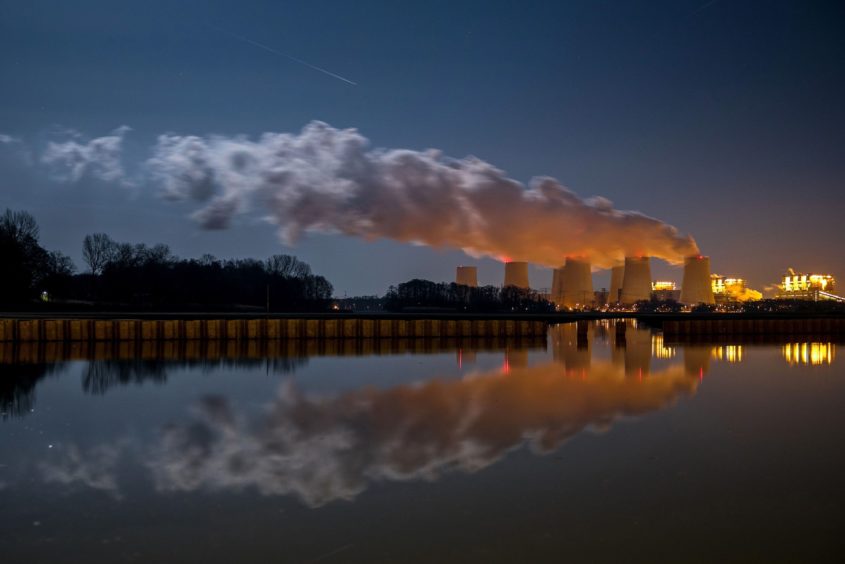
On Sunday, the global climate summit COP27 will convene in Egypt. Bloomberg Green will cover the conference in depth and we’ve been preparing for it, looking at Egypt’s future under a possible 3C of warming and discussing why every election is now a climate election.
Every COP is important for moving decarbonization forward, and for outlining what work still desperately needs to be done. But 2022 marks a first: The talks kick off as energy analysts make a solid case that we’ll hit peak fossil fuel consumption, and soon.
The International Energy Agency’s latest World Energy Outlook leads with what it calls the “first global energy crisis,” a deep and broad set of shocks to the world’s energy system. Russia’s war in Ukraine, supply stresses and extraordinarily high prices mean that consumers worldwide are under alarming pressure.
At the same time, that pressure is an accelerant of fundamental change. The IEA’s Stated Policies Scenario — which essentially carries today’s policy and technology conditions into the future — is inherently conservative. But this year, the scenario still contains a practically revolutionary conclusion: Even with prevailing policy settings it “sees a definitive peak for fossil fuels.” Coal demand peaks this decade, natural gas by the end of the decade, and oil by the mid-2030s.
Add in countries’ recently announced climate pledges and demand declines even faster. Within the power sector, fossil fuel emissions have probably peaked already, and they are expected to drop from more than 14 billion tons per year in 2022 to less than 10 billion tons by 2050.
The implications are hard to overstate. Even a plateau in demand for fossil fuels creates an uncertain investment environment, with capital investment feeding not growth but a zero-sum game in which one company or country’s oil and gas or coal expansion necessarily comes with the contraction of another.
In the same IEA scenario, renewable energy in aggregate meets almost all growth in global energy demand through 2030. The agency’s own data and projections from BloombergNEF show just how close that moment already is in the electricity sector, with wind and solar leading the way.
Prior to releasing its full World Energy Outlook report, the IEA said renewables would add about 700 terawatt-hours of new power generation this year, two-thirds of that — or about 460 terawatt-hours — from wind and solar. The annual increase exceeds the amount of power France consumed from all sources in 2019. On BloombergNEF’s analysis, by the end of 2023, new renewable capacity should generate about 650 terawatt-hours a year — more power than Brazil consumed from all sources in 2019.
This year’s expected jump in wind and solar generation is greater than any one year of growth in gas-fired power generation, and would be the fifth-largest ever for coal-fired generation too. Those technologies are reactive to several factors: their own fuel price, their power price compared to other resources, and economic activity (which explains how coal had a record decline in 2020 and a record gain in 2021). Wind and solar, on the other hand, add more incremental generation every year and to date, that growth is smoothly exponential .
This year’s new wind and solar power are equal to about 1.6% of total electricity consumption in 2021. Next year’s expected new generation is closer to 2.3% of 2021 global electricity consumption. Wind and solar growth alone are now not far off annual rates of power demand growth from 2015 to 2019, and close to the smoothed five-year compound rate before Covid-19.
There are two ways to think about these fairly simple projections. The first is that if growth in wind and solar generation exceeds growth in global power consumption, the conditions IEA expects next decade are already arriving for the power sector. Solar and wind become not only a growth market, but all of the growth in global power generation. That does not mean that other resources enter structural decline, however. This past summer was quite instructive in this regard, with forced outages significantly reducing French nuclear power generation and drought impacting hydropower worldwide. Those technologies (hopefully!) return to force, but as they do the growth in wind and solar then means even more pressure on power generation from coal, gas and oil.
The second way to think about this, which is important for COP27 and every climate convention hereafter, is about additionality. In the definition of the Intergovernmental Panel on Climate Change, additionality refers to the reduction in emissions from a project above and beyond what would happen otherwise. We can think of further gains in zero-carbon technology the same way. If today’s conservative outlook already expects fossil fuel consumption to peak, then anything that goes above and beyond has an outsized emissions impact. More renewable power, and more electric transportation, do not just flatten the growth of fossil fuels; they actively erode their dominance.
Progress to date has already moved the world far off its previous worst-case scenarios for global temperature rise. That does not mean that climate negotiators should rest — if anything, it should give them confidence that even more progress is possible.
